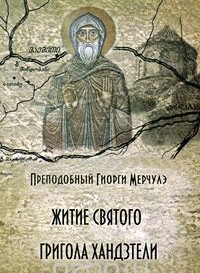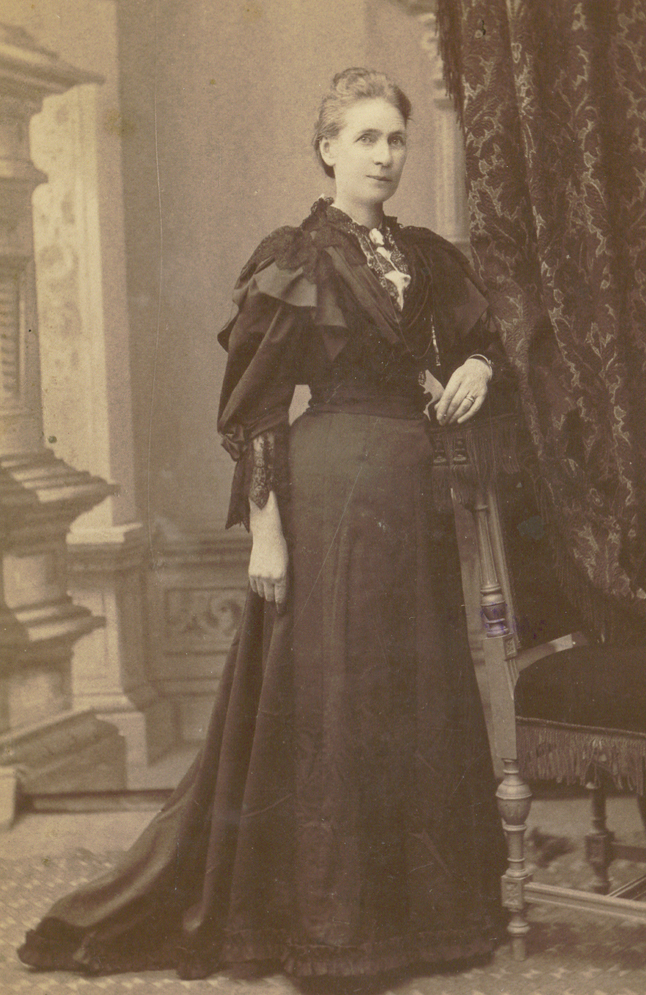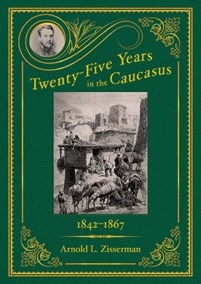

|
The Kartvelologist The Kartvelologist” is a bilingual (Georgian and English) peer-reviewed, academic journal, covering all spheres of Kartvelological scholarship. Along with introducing scholarly novelties in Georgian Studies, it aims at popularization of essays of Georgian researchers on the international level and diffusion of foreign Kartvelological scholarship in Georgian scholarly circles. “The Kartvelologist” issues both in printed and electronic form. In 1993-2009 it came out only in printed form (#1-15). The publisher is the “Centre for Kartvelian Studies” (TSU), financially supported by the “Fund of the Kartvelological School”. In 2011-2013 the journal is financed by Shota Rustaveli National Science Foundation. |
An Artistic Image of Rustaveli in Shakespeare’s Cymbeline
Shakespeare’s Cymbeline one of the main plot sources of which is based upon the love story of Nestan and Tariel, represents transformation of artistic images from Rustaveli’s MPS. In particular, a famous metaphor from Rustaveli’s epic “a pen steeped in gall” was adopted as an artistic image by Shakespeare: the fellow in love, banished abroad, implores the only heir to the throne to send him a letter “though ink be made of gall”.
keywords:Rustaveli, Shakespeare, “Cymbeline”, “The Man in a Panther-Skin” Category: SCHOLARLY STUDIES Authors: Anthony Anderson New Russian Translation of “The Life of Grigol Khandzteli”
keywords:Giorgi Merchule, Grigol Khandzteli, Gregory from Khandzta, Georgian Hagiography, Ioseb Zeteishvili, Joseph Zeteishvili Category: SCHOLARLY STUDIES Authors: Anthony Anderson Theological Meaning of the Paintings of Matskhvarishi Archangel’s Church
keywords:Zemo Svaneti, Church, Mural painting, Iconography, Theological thought Category: SCHOLARLY STUDIES Authors: Anthony Anderson Marjory Wardrop and Guria
One of the most famous English women in the Republic of Georgia is Marjory Wardrop (1869-1909), who translated the Georgian national epic poem, “The man in the panther’s skin” into English. This article describes her visit to the region of Guria, in the West of Georgia, in 1895. Marjory Wardrop visited Georgia only twice in her life. Her first visit was in 1894-5. She travelled with her mother from England, by train and boat, arriving at Batumi in December 1894. Her brother Oliver was already in Georgia. This is how Marjory described her arrival: “One morning, about the middle of December 1894, after a voyage of thirteen days from Marseilles, I awoke to find our steamer lying outside the port of Batum. The day had just dawned, and the town was veiled in a chilling mist, but from time to time a glimpse might be caught of the high mountains beyond. It was my first glimpse of the land which I had so often pictured to myself, in visions of night as well as in my waking dreams. Since first my interest had been aroused in the Ancient Kingdom of Georgia, in its beautiful scenery, in its brave and handsome inhabitants, in its rich literature and, above all, in its sad yet glorious history, I had longed for the day when I should myself visit those places of which I had read and thought, when I should perhaps meet those poets in whose works I had found so much delight” keywords:Marjory Wardrop, Nino Gurieli, Ozurgeti Category: CHRONICLE OF EVENTS Authors: Anthony Anderson
On publishing Twenty-Five Years in the Caucasus, 1842-1867, by Arnold L. Zisserman
keywords:Zisserman, Twenty-Five Years in the Caucasus Category: CHRONICLE OF EVENTS Authors: Anthony Anderson |
Categories Journal Archive |



 The first editor of The Life of Grigol Khandzteli Nicholas Marr accompanied work with an entire volume of Russian translations along with researches and the diary about the journey in Tao-Klarjeti and Shavsheti. It was the start of the Giorgi Merchule’s story narrated in a foreign language. Very soon in 1917-1919 the Latin translation of the Life of Grigol Khandzteli was performed by Paul Peeters and in 1922-1923 along with other important Georgian works was published (Vie de St. Gregoire de Khandztha). Later, in 1956, „Lives and Legends of the Georgian Saints“ by David Marshall Lang with English translation of the Life of Grigol Khadzteli performed by Lang was published. (“The Life of St. Gregory of Khandzta”: Lives and Legends of the Georgian Saints, London 1956, pp. 155-65); in 2015 an American scholar of Norwegian origin Theophane-Erik Halvorson introduced a new English translation of The Life accompanied with the pictures captured in Nikozi. Before it in the December 1999 the 42nd edition of Russian journal Symbol located in Paris published new Russian translation of The Life of Grigol Khandzteli [9, pp. 245-341] made by Jozeph Zeteishvili. In 2008 Moscow publishing house CRITERIUM re-edited this masterpiece of Georgian Hagiography in the series named „mother of the Saints”. The present work is dedicated to the Russian translation made by Archpriest Ioseb Zeteishvili.
The first editor of The Life of Grigol Khandzteli Nicholas Marr accompanied work with an entire volume of Russian translations along with researches and the diary about the journey in Tao-Klarjeti and Shavsheti. It was the start of the Giorgi Merchule’s story narrated in a foreign language. Very soon in 1917-1919 the Latin translation of the Life of Grigol Khandzteli was performed by Paul Peeters and in 1922-1923 along with other important Georgian works was published (Vie de St. Gregoire de Khandztha). Later, in 1956, „Lives and Legends of the Georgian Saints“ by David Marshall Lang with English translation of the Life of Grigol Khadzteli performed by Lang was published. (“The Life of St. Gregory of Khandzta”: Lives and Legends of the Georgian Saints, London 1956, pp. 155-65); in 2015 an American scholar of Norwegian origin Theophane-Erik Halvorson introduced a new English translation of The Life accompanied with the pictures captured in Nikozi. Before it in the December 1999 the 42nd edition of Russian journal Symbol located in Paris published new Russian translation of The Life of Grigol Khandzteli [9, pp. 245-341] made by Jozeph Zeteishvili. In 2008 Moscow publishing house CRITERIUM re-edited this masterpiece of Georgian Hagiography in the series named „mother of the Saints”. The present work is dedicated to the Russian translation made by Archpriest Ioseb Zeteishvili. This article discusses the fresco paintings of Zemo Svaneti Latali Matskvarishi Church of the Archangels and their ideological-theological designation. In these paintings the iconography of the scenes of the Christological cycle, their compositional structure are noticeably complicated. The subjects are not arranged in either historical or chronological order and various iconographic schemes are employed. Concepts of the Resurrection and Sacrifice, which are presented in the sanctuary and the western wall decor, are further developed on the walls of the church. The scenes placed in different registers echo each other ideologically and make up the image of Christ’s glory in the arch. Specific sections present the scenes that are unified within a theological concept, related to each other in a semantic way that clearly shows deep theological thoughts distinguished by including different scenarios: annunciation, revelation, victim, resurrection and salvation of conceptual accents are distributed on the wall- arch. Announcement concerning the embodiment of the Lord, his wordly eminence (“Annunciation,” “Nativity”), manifestation of the divine nature of Christ Redeemer (“Candlemas,” “Transfiguration,” “The raising of Lazarus”, “Descent of the Holy Spirit,” “Dormition of the Mother of God”), sacrifice offered by him (“The crucifixion”), resurrection – arrival with glory, (“Resurrection”, “Christ of Old Days”) The above-mentioned ensemble of paintings is associated with the salvation of the soul and the concept of the resurrection.
This article discusses the fresco paintings of Zemo Svaneti Latali Matskvarishi Church of the Archangels and their ideological-theological designation. In these paintings the iconography of the scenes of the Christological cycle, their compositional structure are noticeably complicated. The subjects are not arranged in either historical or chronological order and various iconographic schemes are employed. Concepts of the Resurrection and Sacrifice, which are presented in the sanctuary and the western wall decor, are further developed on the walls of the church. The scenes placed in different registers echo each other ideologically and make up the image of Christ’s glory in the arch. Specific sections present the scenes that are unified within a theological concept, related to each other in a semantic way that clearly shows deep theological thoughts distinguished by including different scenarios: annunciation, revelation, victim, resurrection and salvation of conceptual accents are distributed on the wall- arch. Announcement concerning the embodiment of the Lord, his wordly eminence (“Annunciation,” “Nativity”), manifestation of the divine nature of Christ Redeemer (“Candlemas,” “Transfiguration,” “The raising of Lazarus”, “Descent of the Holy Spirit,” “Dormition of the Mother of God”), sacrifice offered by him (“The crucifixion”), resurrection – arrival with glory, (“Resurrection”, “Christ of Old Days”) The above-mentioned ensemble of paintings is associated with the salvation of the soul and the concept of the resurrection.
